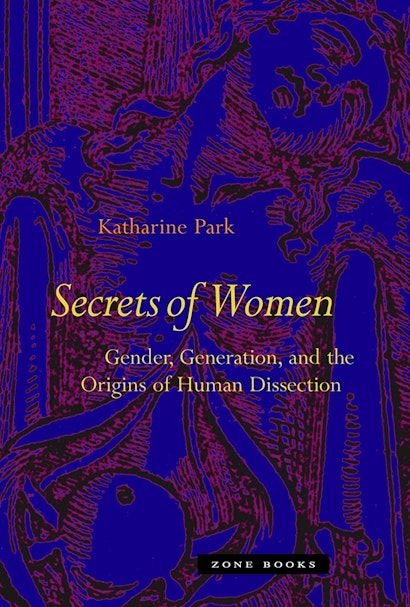Secrets of Women: Gender, Generation, and the Origins of Human Dissection


Hardcover
Paperback
- Price:
- $28.95/£22.00
- ISBN:
- Published:
- Apr 23, 2010
- Copyright:
- 2006
- Pages:
- 424
- Size:
- 6 x 9 in.
- 62 b/w illus.
- Main_subject:
- Sociology
Toward the end of the Middle Ages, medical writers and philosophers began to devote increasing attention to what they called “women’s secrets,” by which they meant female sexuality and generation. At the same time, Italian physicians and surgeons began to open human bodies in order to study their functions and the illnesses that afflicted them, culminating in the great illustrated anatomical treatise of Andreas Vesalius, in 1543.
Katharine Park traces these two closely related developments through a series of case studies of women whose bodies were dissected after their deaths: an abbess, a lactating virgin, several patrician wives and mothers, and an executed criminal. Drawing on texts and images, she explores the history of women’s bodies in Italy between the late thirteenth and the mid-sixteenth centuries in the context of family identity, religious observance, and women’s health care.
Secrets of Women explodes the myth that medieval religious prohibitions hindered the practice of human dissection in medieval and Renaissance Italy, arguing that female bodies, real and imagined, played a central role in the history of anatomy during that time. The opened corpses of holy women revealed sacred objects, while the opened corpses of wives and mothers yielded crucial information about where babies came from and about the forces that shaped their vulnerable flesh.
In the process, what male writers knew as the “secrets of women” came to symbolize the most difficult challenges posed by human bodies — challenges that dissection promised to overcome. Thus Park demonstrates the centrality of gender to the development of early modern anatomy through a study of women’s bodies and men’s attempts to know them and, through them, to know their own.
Awards and Recognition
- Winner the Welch Medal, American Association for the History of Medicine
- Winner of the Margaret W. Rossiter History of Women in Science Prize, History of Science Society